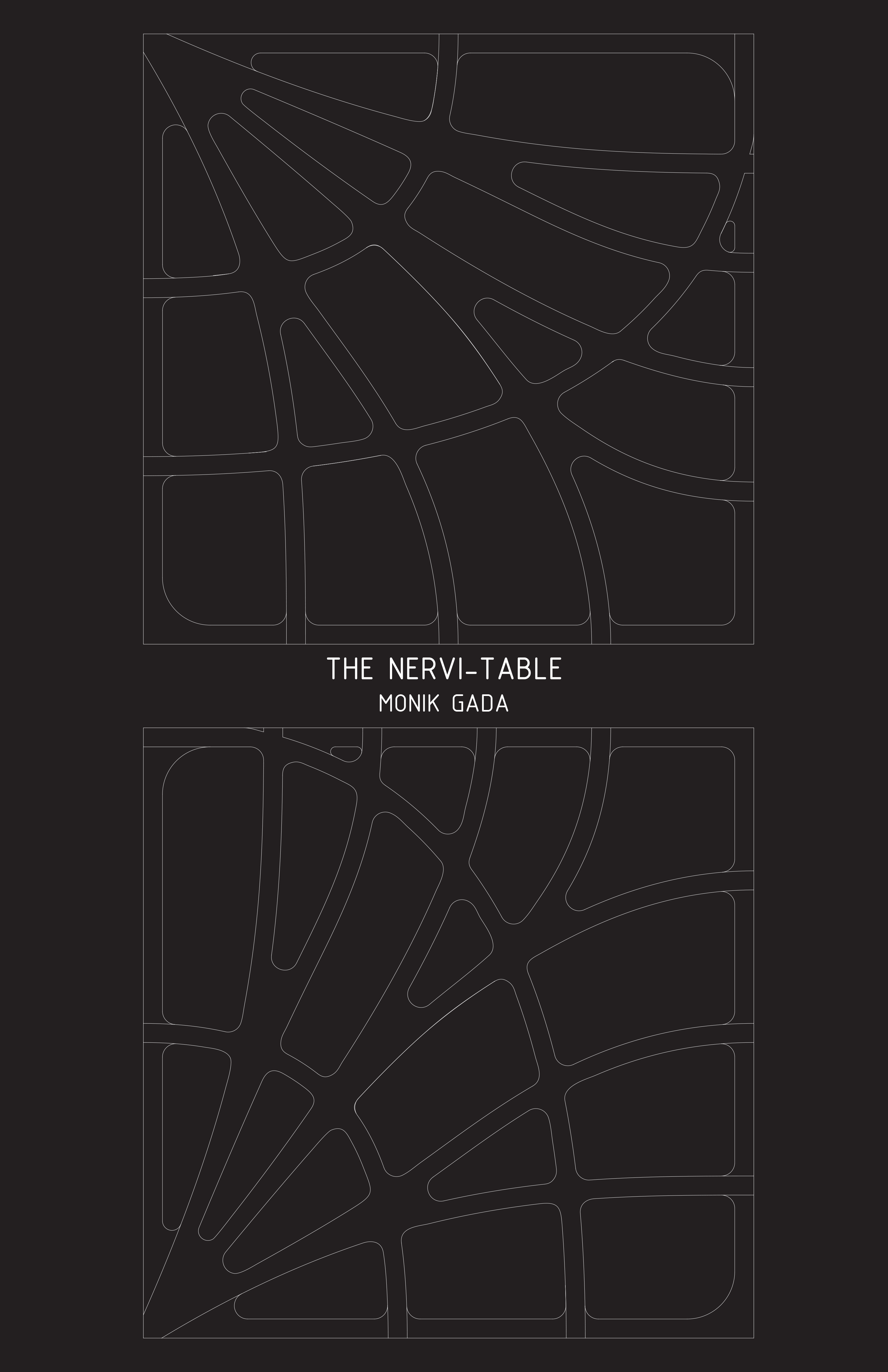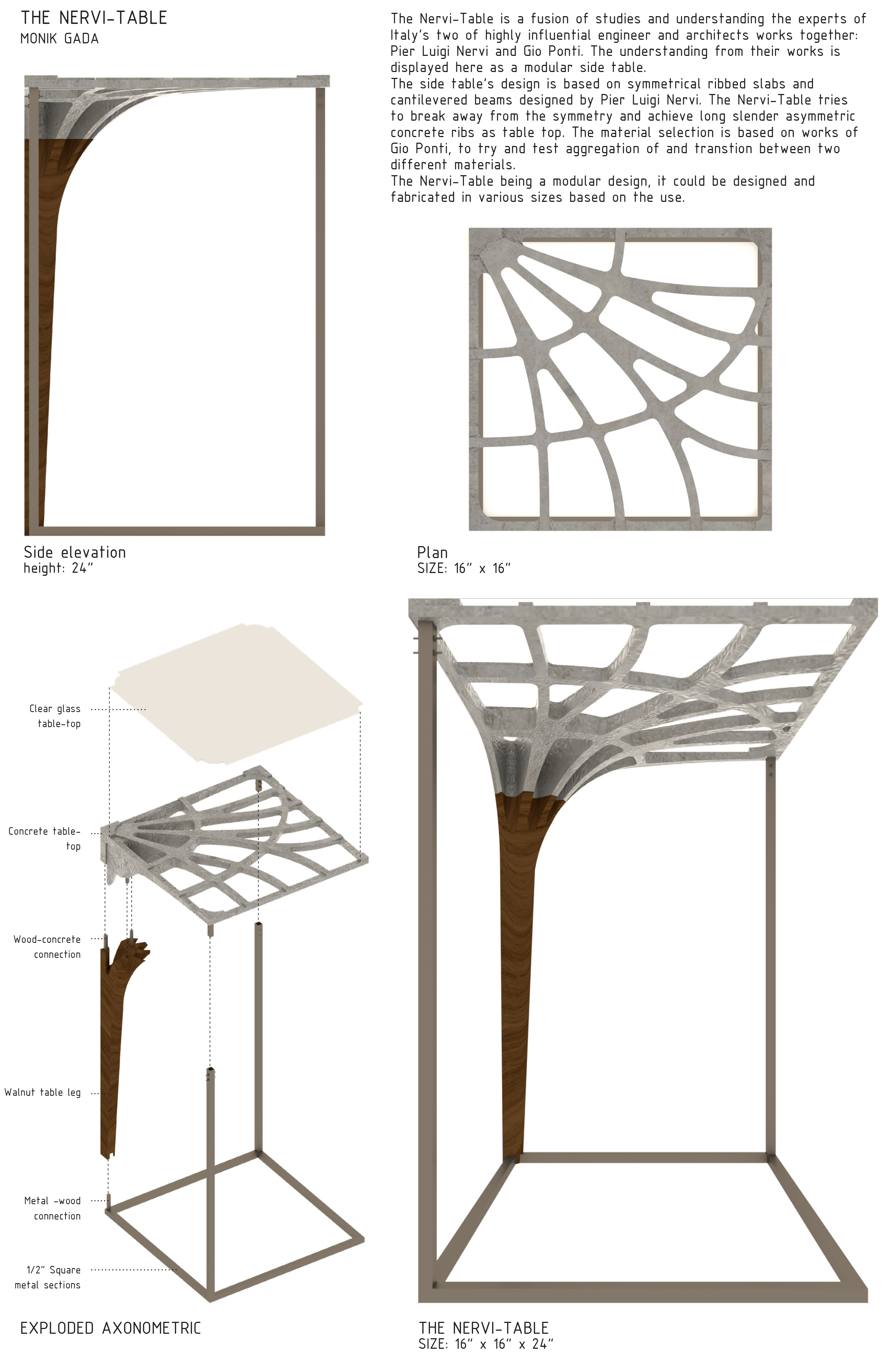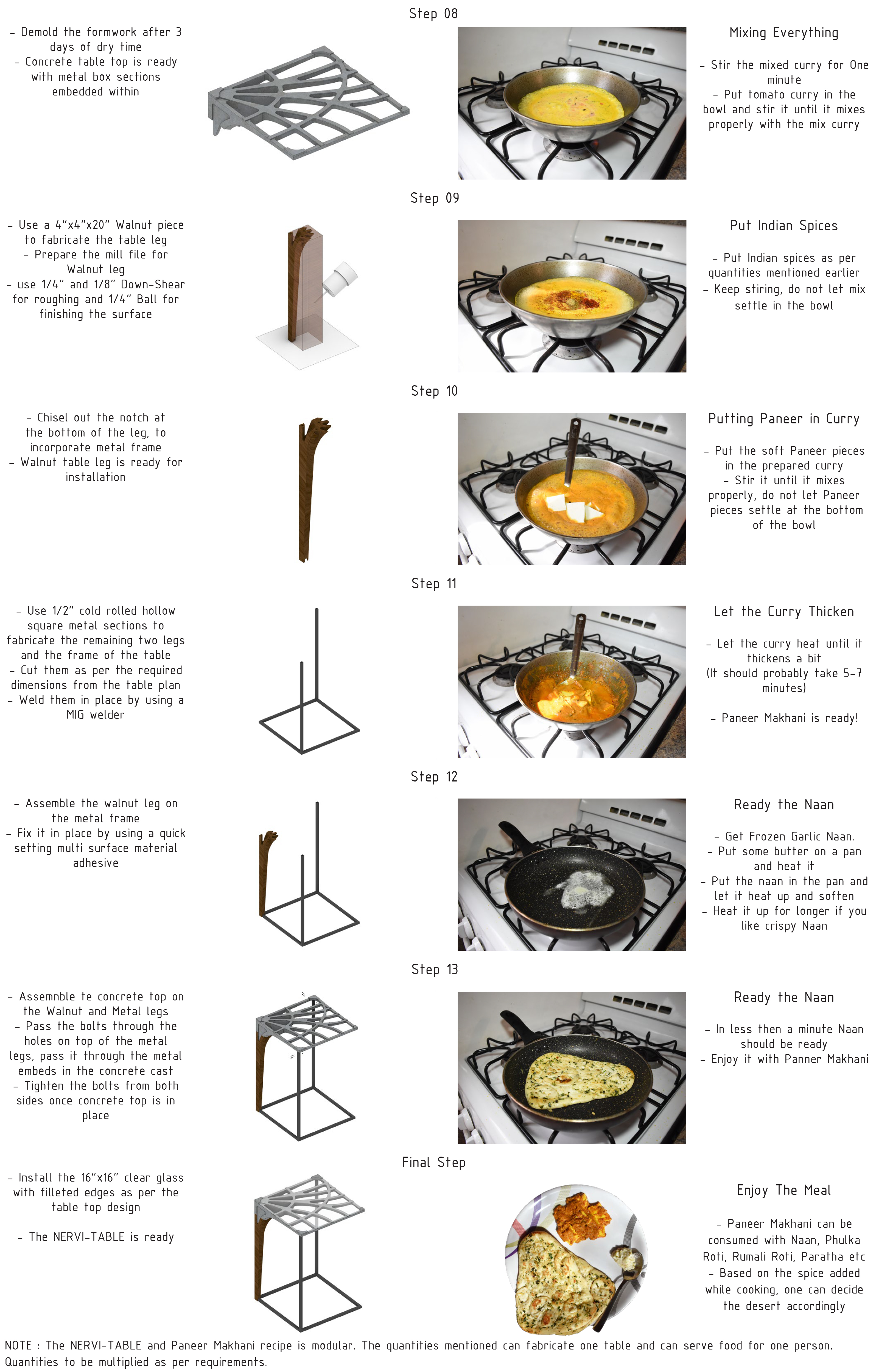The Nervi-Table
Monik Gada
![]()
![]()
![]()
![]()
![]()
![]()
![]()
![]()








The Nervi-Table is a fusion of studies and understanding of Italy’s two of highly influential engineer and architects working together: Pier Luigi Nervi and Gio Ponti. The understanding from their works is displayed here as a modular side table.
The side table’s design is based on symmetrical ribbed slabs and cantilevered beams designed by Pier Luigi Nervi. The Nervi-Table tries to break away from the symmetry and achieve long slender asymmetric concrete ribs as table top. The material selection is based on works of Gio Ponti, to try and test aggregation of and transtion between two different materials.
The Nervi-Table being a modular design, it could be designed and fabricated in various sizes based on the use.
The side table’s design is based on symmetrical ribbed slabs and cantilevered beams designed by Pier Luigi Nervi. The Nervi-Table tries to break away from the symmetry and achieve long slender asymmetric concrete ribs as table top. The material selection is based on works of Gio Ponti, to try and test aggregation of and transtion between two different materials.
The Nervi-Table being a modular design, it could be designed and fabricated in various sizes based on the use.
The recipe chosen is also based on modular cooking technique. The ingredient portions mentioned are applicable for a single user. The dish being modular, portions can be multiplied based on number of people to be served to.
Paneer makhani (also called paneer butter masala) is a slightly sweet creamy dish of paneer, originating from the Indian subcontinent, in which the gravy is prepared usually with butter (makhan), tomatoes, cashews or cream. Makhan is the Hindi word for ‘butter’. Makhani means ‘buttery’. This dish originated in the 1950s when Punjabis at Moti Mahal restaurant in Delhi invented the sauce by mixing fresh butter into a tomato-based curry.
Paneer makhani (also called paneer butter masala) is a slightly sweet creamy dish of paneer, originating from the Indian subcontinent, in which the gravy is prepared usually with butter (makhan), tomatoes, cashews or cream. Makhan is the Hindi word for ‘butter’. Makhani means ‘buttery’. This dish originated in the 1950s when Punjabis at Moti Mahal restaurant in Delhi invented the sauce by mixing fresh butter into a tomato-based curry.